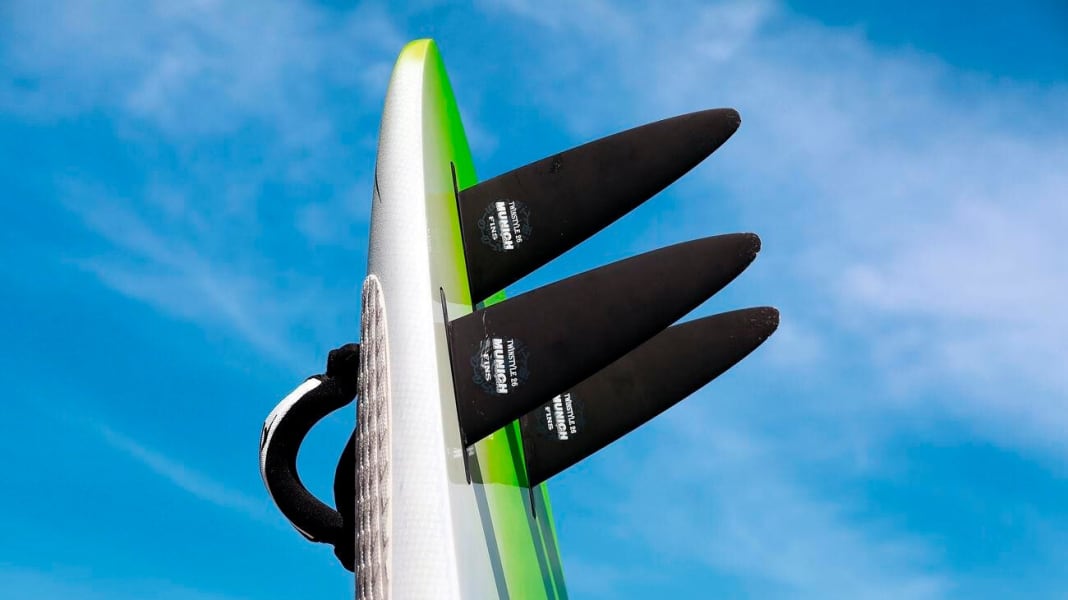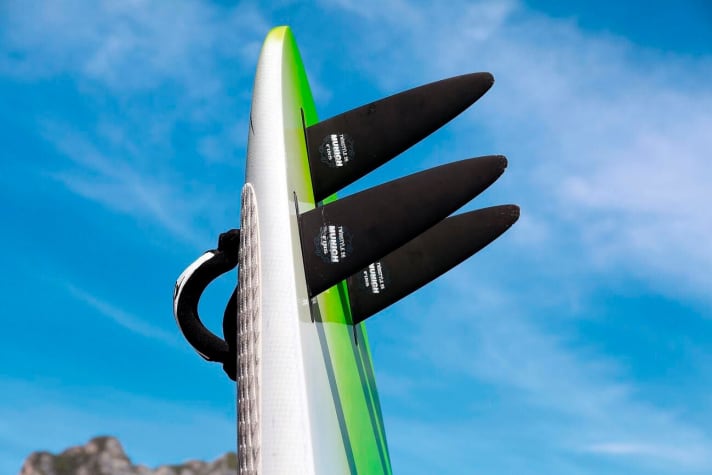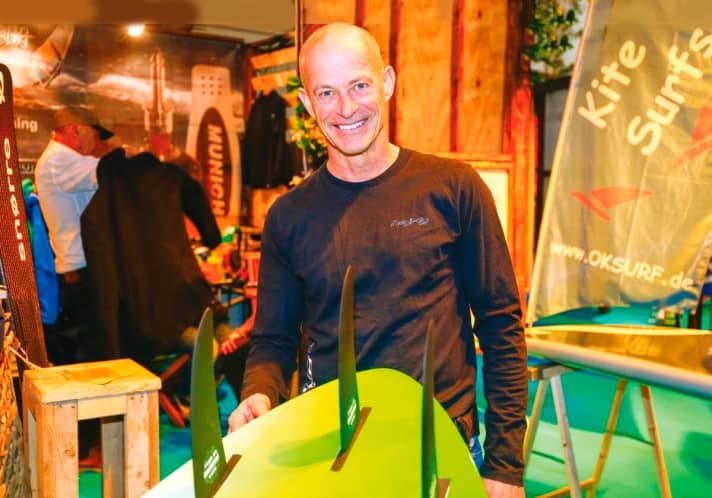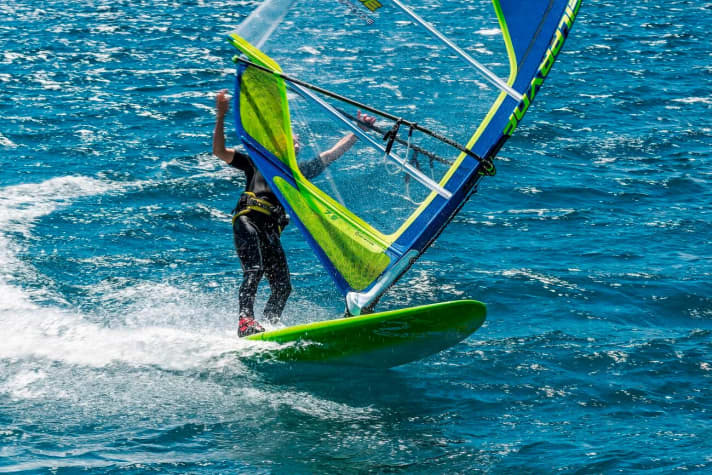Freeride three-point spinner from Hejfly


You're usually not happy when your Drop Inn boards are tested against wide freeriders. Why is that?
What I find offensive are the reviews that say the board is more for light riders. If you're testing on Lake Garda, with lots of waves and little wind, then heavy surfers in particular need a board with a lot of planing power. However, I have designed the boards for a completely different group of buyers. We don't want to be in competition with the wide boards. I want to fill a gap. If people who are heavy are surfing in five or six wind forces, then they want a manoeuvrable board. But with a lot of volume. I actually want to fill this gap.
So what does the typical customer for the 146 Drop Inn look like?
I always get great feedback from heavy people weighing 80, 90, 100, 110 kilos. Maybe not the super athletes. They want a board for six wind forces and it works extremely well there because it still has a bit of rocker and is very easy to control. Where acceleration is not so important, because the 100-kilo man is fast anyway.
Which sail sizes are most suitable?
A 100-kilo man rides a six-power sail in six wind forces. Then, of course, there are also women (ed.: probably also light men) who don't yet have the necessary riding skills and can ride the board with a 3.7 sail in six wind forces. These are boards that can also be ridden by light riders or children. I don't want to restrict myself. Young people ride them with a five- or 5.6-metre sail because they are much easier to steer than an 80-centimetre wide board and also have the surf feeling that I think a board should have. Not just planing and early planing. On a good north wind day on Lake Garda, nobody wants an early planing board.

So who is the 116 suitable for?
This is an all-rounder, a cruising board that has to work everywhere. Not a board that somehow wants to compete with a slalom board. At the weekend I sold a board to a surfer who weighs 90kg. But he doesn't have the riding skills for a 90-litre board, he hasn't been surfing long enough for that. When the wind stops, he goes under with it.
So a concept for people who want more volume even in stronger winds because they can't or don't want to ride smaller boards?
That's one reason. But I don't want to be pushed into a corner and told that these are boards for people who can't surf. I ride the boards myself. Because I like the feeling. I weigh 65 kilos and ride all sizes. When I'm surfing for speed, I ride the single fin and when I'm on the Gargagno, I ride the "S" (ed.: Drop Inn with 116 litres), then I often don't take a bigger sail when there's little wind, but instead of the waveboard I take the Drop Inn S and only put two fins in. Then I have a board that planes well, still goes well through the surf and with which you can still ride a wave. Then the board is really fun.
So one board for many conditions?
Yes, if I had a slalom board now, for example, I wouldn't need to do anything in the waves. When I go on holiday, I can't take so much luggage with me. With this board, I'm always halfway there in terms of speed on the one hand. But I also have the choice of putting two small fins in the back instead of one big one or three. And then I have a low-wind wave board or a board that is easy to jibe.

Do three fins require different fin shapes than usual?
They have a thinner profile and less surface area.
Are the boardshapes different for three fins than for one?
It's the same. The boards are designed to work for both. If I take the rear fin out, the front fins are even further forward than they used to be with the twins, which means I have an even more manoeuvrable board. But with two fins you can only ride it in the waves.
How can your board sizes - much longer and narrower - be compared to the flat wide shapes like JP-Australia Magic Ride or Fanatic Gecko?
That doesn't work directly. I have the feeling that they're all just building boards for the bad Ora. They have to be wide. But who wants to ride a 70-centimetre board when it's really windy? Nobody does that.
The wide, thick tails are also made for heavy surfers, but your boards are also narrow at the back. What's behind this?
Then I simply have more control. I don't believe in all that stubby stuff either. A pro naturally wants to be mega loose and mega radical. But I also have to look at the level of the surfers. Most of them don't want that, they want a board that's easy to control. If you ride a board that is sawn off at the back in strong winds, every second jibe won't work. In light winds, a wide board can of course jibe easily. If you go in at low speed. But not when it's really rattling. The narrowness also makes the board easier to turn. If ten people are coming towards you, you can simply swerve faster, the board simply reacts more spontaneously and has no self-steering behaviour when it gets fast. I see this as a problem with all the wide boards.
You make the boards longer for this?
Yes, and you don't stand quite so far back. That gives me more control and it feels more like a wave board. The way you want to ride a board when it's not just about planing. There are also many areas where this is not the main focus.
"These boards were not intended to compete with the wide boards in tests. These boards are intended to fill a gap." Klaus Jocham, Shaper Hejfly and Surfline Munich
All information and sales: www.hejfly.com

